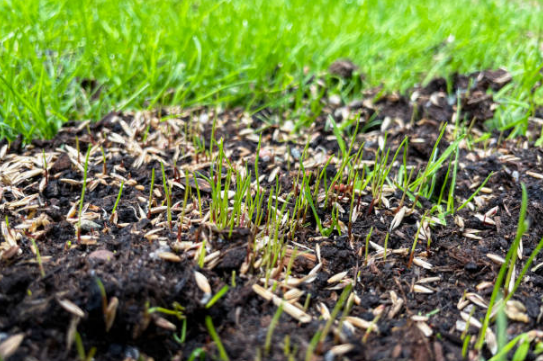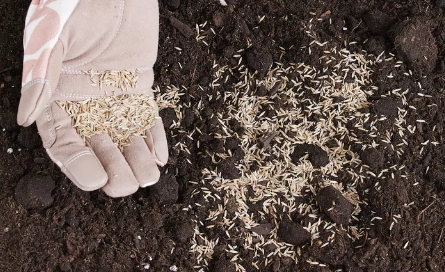Having a beautiful lawn requires more than just good grass seeds. Sometimes, it takes some effort. People always seem to be focused on one task, and that is to sow and reseed the lawn.
One way to reduce the time and effort required for this work is to sow seeds in the winter, a process known as dormant seeding.

Grass can be sown in winter, which is known as dormant seeding. It is best to do it in a place where there is a lot of snow and the temperature is consistently low, so that the ground can freeze until spring.
As long as you use grass species that can withstand lower temperatures, such as some Kentucky bluegrasses, some ryegrass varieties, and some tall fescue, you won’t have a problem sowing seeds during the winter months.
Grass seeds remain dormant during the winter months until temperatures rise and they thaw and germinate.
Dormant Sowing: How to Sow Grass Seeds in Winter
Sowing a lawn in the winter is easy. With just a little preparation, the lawn and soil are ready to be sown.
- Mow the lawn so that it is as short as possible. Turn the lawn mower to its lowest setting and mow two to three times. Usually, this is bad for the lawn, but doing so is called “mowing”.
- Inspect the area you plan to sow with a wire rake, scraping the soil surface as much as possible. Your lawn is ready to start planting. The best way to sow grass is to use a spreader.
- Hand-held seeders or wheeled seeders are fine. It’s even better if you can time the predicted rainfall well in advance. Now, it’s just a matter of letting the natural cooling and warming process of winter do its job.

As the ground changes, the grass seeds will remain in contact with the ground, absorb moisture, and begin to germinate as the temperature rises.
Winter Care for Sowing Grass
Dormant seeding is not effective in all places and may require extra care in areas where this seeding method is not suitable. For dormant sowing to work, the most important thing is moisture.
The best conditions for dormant sowing are winter snow-covered ground that does not melt until spring, or persistently cold temperatures and higher precipitation.
If you live where you don’t have either of these fertilizers, you may need to spray the sown area occasionally.
Another question may be how to protect the sowing area if it is not covered with snow. Snow cover prevents seeds from being eaten by wild animals or blown away by the wind. Covering the newly sown area with a thin layer of straw can help protect the lawn until the spring when the lawn is ready to sprout.
Regardless, dormant seeding is a great way to save time, effort, and sometimes money on sowing your lawn and replacing your turf. Even if you need to take a few extra steps to protect the seeds you planted in the winter, it’s a lot less hassle than replanting your lawn during the hot summer months or asking a lawn company to sow it for you.